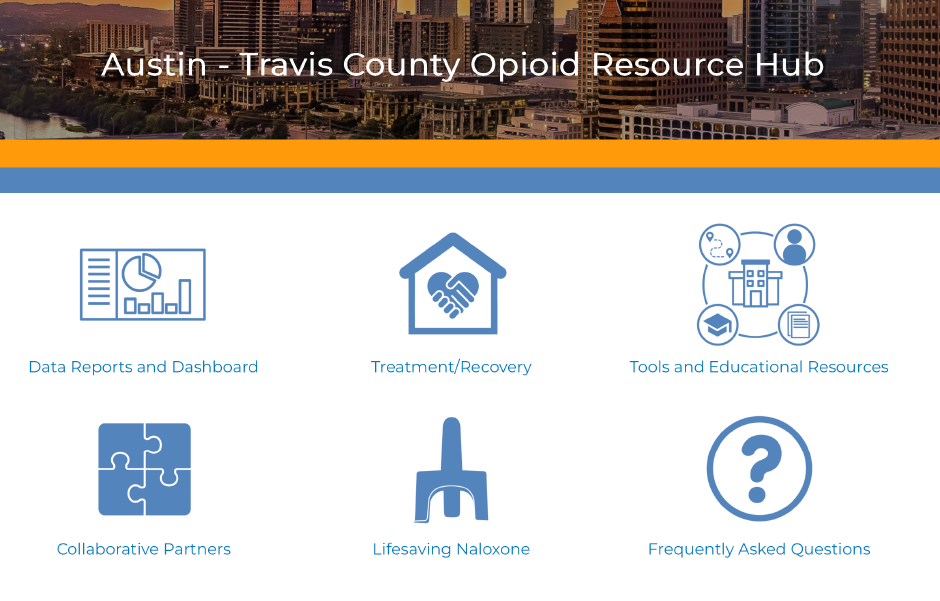
Travis County saw a drop in fentanyl poisonings and accidental drug overdose deaths in the first half of 2024.
AUSTIN, Texas – Austin Public Health (APH) has published a new resource hub containing local resources and information on opioids. The hub will work to increase awareness and help reduce the number of drug overdoses in our community.
“Thanks to the work of the City of Austin, Travis County, and our many community partners, we have resources available to fight this overdose epidemic. We must ensure that our community is aware of all that is available,” said Austin-Travis County Health Authority Dr. Desmar Walkes. “Let’s take the time to familiarize ourselves with all the help that is available – it will save lives.”
In the Austin-Travis County Opioid Resource Hub, you can:
- Review the APH Opioid Overdose Dashboard and Opioid Overdose Surveillance Report to see the impact of opioids on our community.
- Connect with local treatment and recovery services.
- View outreach materials and toolkits to raise awareness of the dangers of opioids in our community.
- Connect with community partners in Austin-Travis County that work to fight the opioid crisis.
- Learn about Naloxone/Narcan and where to find it in Austin-Travis County.
- Find a list of frequently asked questions on the topic of opioids.
The creation of the resources hub is a collaborative effort between APH, Travis County, Texas Harm Reduction Alliance, Austin-Travis County Emergency Medical Services, Communities for Recovery, Integral Care, Texas Health and Human Services and Central Health.
Learn to Spot and Prevent Opioid Overdose
Experts recommend everyone learn these important ways to spot and prevent opioid overdoses:
- Don’t use any drug alone or behind a locked door.
- If you have naloxone, let everyone, including fellow drug users, know, just in case.
- Signs of overdose include small pupils, decreased responsiveness/mental status and slow to no breathing.
- If you find someone who has signs of an overdose, even if you are not sure, use naloxone and start basic life support to resuscitate them. Call 911 since fatal opioids usually last longer than intranasal naloxone (about 90 minutes) and a person who has overdosed will need continuing care.
To learn more about how you can recognize and prevent opioid overdoses, please visit www.one-dose.org.

